1. Duct Tape
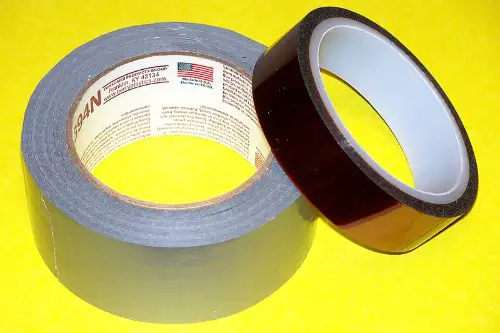
Duct tape was originally created during World War II to help soldiers quickly seal and waterproof ammunition cases, according to NATO. Made from a strong cloth-backed adhesive, it was nicknamed “duck tape” because water rolled off it like a duck’s back. Soldiers quickly realized it could fix nearly anything, from broken equipment to torn boots. After the war, manufacturers saw its potential for household repairs and rebranded it for everyday use.
Now, duct tape is a staple in homes, garages, and even space missions. People use it for everything from sealing air ducts to crafting wallets. It even played a key role in saving the Apollo 13 crew by helping them fix their damaged spacecraft. All this from a simple military invention meant to keep moisture out of ammo boxes.
2. The Laser

Laser technology, often associated with medical equipment or CD players today, has military origins, according to Matt Berman from Popular Mechanics. The development of lasers for targeting and defense systems dates back to the 1960s, when the U.S. military sought to create more accurate weapons and surveillance tools. The first practical use of lasers in military applications was for range-finding and targeting on aircraft and ships. Over time, civilian sectors adapted the technology for uses like barcode scanners, laser pointers, and even eye surgeries.
Laser technology is now so deeply embedded in daily life that it’s easy to overlook its military beginnings. From medical lasers that help treat conditions like cataracts to laser printers in your home or office, this technology has become crucial in many industries. What was once a high-tech military tool is now used in countless ways, improving everything from health care to entertainment. It’s a great example of how military research leads to breakthroughs that permeate everyday life in ways we might not expect.
3. Synthetic Rubber

During World War II, the U.S. military faced a shortage of natural rubber, which was essential for making tires, boots, and other military gear. In response, military-funded research into synthetic rubber was ramped up, leading to the development of materials that could be used as a substitute for natural rubber. The synthetic rubber industry exploded after the war, and today it’s used in everything from car tires to footwear and industrial applications. Without military investment, the widespread use of synthetic rubber might have taken much longer to become a reality, according to Alexander J. Field from Yale University Press.
Synthetic rubber not only helped the military maintain its operations during wartime but also led to major advancements in the automotive industry and manufacturing. Today, it’s a crucial component in countless products, especially in industries that rely on durable, weather-resistant materials. The creation of synthetic rubber is yet another example of how military funding has a lasting effect on civilian products and industries. What started as a wartime necessity has become an integral part of modern life.
4. GPS (Global Positioning System)
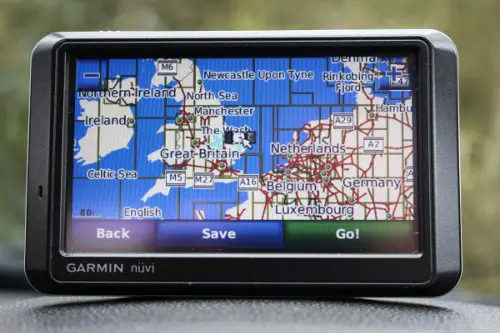
The GPS system is another everyday technology that exists because of U.S. military investment, according to Jermaine Walker from NASA. The system was originally developed in the 1970s by the U.S. Department of Defense to help guide military forces accurately, especially in difficult terrain. It’s a network of satellites that relay signals to GPS receivers on the ground, providing precise location information. Initially, the system was restricted for military use only, but by the 1980s, it was made available to civilians, fundamentally changing the way we navigate.
Now, GPS is so integrated into our daily lives that we often forget it exists only because of military funding. It’s used for everything from driving directions to tracking deliveries and even finding the nearest coffee shop. Without military research into satellite navigation, we might still be using maps and compasses for most of our travel. GPS’s widespread use has made it indispensable, especially for businesses and individuals on the go.
5. Wristwatches
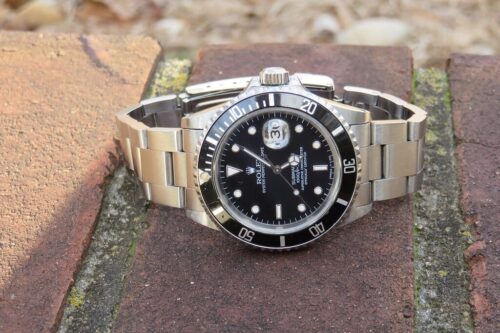
Before World War I, men mostly carried pocket watches, and wristwatches were considered a ladies’ accessory. But during the war, soldiers needed a way to check the time quickly without fumbling for a watch in their pocket. The military developed rugged wristwatches that could withstand the battlefield while keeping precise time. After the war, the convenience of wristwatches caught on with civilians, and they became mainstream.
Now, wristwatches are worn for both function and fashion. They range from luxury timepieces to high-tech smartwatches. While smartphones have taken over some of their timekeeping role, wristwatches remain popular for their style and reliability. What was once a military tool is now a personal statement.
6. Silly Putty
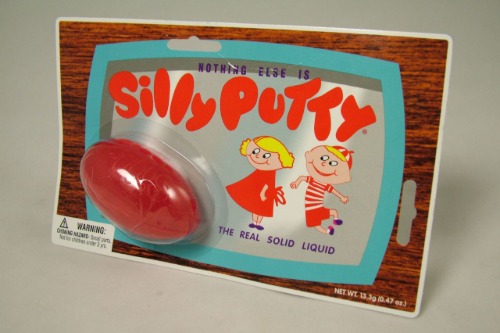
Silly Putty was originally invented during World War II as scientists searched for a rubber substitute. With natural rubber in short supply, researchers experimented with synthetic alternatives. One chemist accidentally created a stretchy, bouncy substance, but it wasn’t useful for military purposes. It wasn’t until years later that someone realized it could be marketed as a toy.
Now, Silly Putty is a childhood favorite, used for bouncing, stretching, and even picking up newspaper print. Over the years, it has also found uses in physical therapy and stress relief. Its accidental invention is a perfect example of how wartime research sometimes leads to fun surprises. What started as a failed rubber replacement is now a classic plaything.
7. Aviator Sunglasses
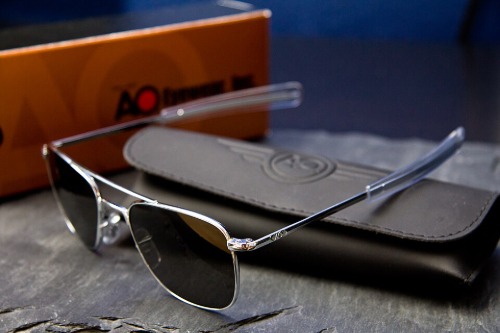
Aviator sunglasses were designed in the 1930s for U.S. Air Force pilots who needed eye protection. The bright sunlight at high altitudes caused glare and eye strain, so Bausch & Lomb created large, dark lenses to shield their eyes. These “aviators” were later issued to military personnel during World War II. After the war, they became popular among civilians, thanks in part to Hollywood stars and military heroes wearing them.
Now, aviators are one of the most iconic styles of sunglasses. They’re worn by everyone from pilots to celebrities to everyday people looking for a cool, classic look. The design remains nearly unchanged since its military origins. What started as a necessity for pilots is now a timeless fashion statement.
8. Freeze-Dried Coffee
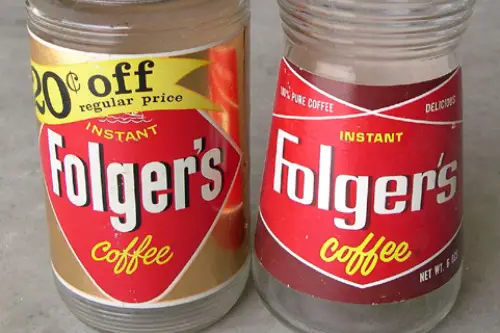
Freeze-dried coffee became widely used during World War II to provide soldiers with a quick caffeine fix. The U.S. military needed a way to supply troops with coffee that was lightweight, long-lasting, and easy to prepare. Scientists developed a method to freeze-dry brewed coffee, preserving its flavor while making it instantly soluble in water. Soldiers loved the convenience, and when they returned home, the demand for instant coffee skyrocketed.
Now, instant coffee is a staple in many homes, offices, and camping trips. Brands like Nescafé and Folgers owe much of their success to its wartime origins. While some coffee lovers prefer freshly brewed options, instant coffee remains a go-to for speed and convenience. What once fueled soldiers on the front lines now powers morning routines everywhere.
9. Jeep

The Jeep was born out of necessity during World War II when the U.S. military needed a tough, all-terrain vehicle. Willys-Overland and Ford developed the original design, creating a lightweight, four-wheel-drive vehicle capable of handling rough battlefield conditions. It quickly became an essential tool for transporting troops, supplies, and even generals. Soldiers grew attached to the rugged, reliable Jeep and brought their love for it home after the war.
Now, Jeeps are a symbol of adventure and off-road capability. The civilian Jeep (CJ) was introduced after the war and became a popular vehicle for farmers, outdoorsmen, and everyday drivers. Modern Jeep models still carry the DNA of the original military design, emphasizing durability and versatility. What started as a war machine is now a favorite for road trips, rock crawling, and daily commutes.
10. Nylon Stockings

Nylon was developed by DuPont in the 1930s, but its first big use was for military parachutes during World War II. The material was strong, lightweight, and resistant to wear, making it ideal for wartime applications. However, when the war ended, manufacturers looked for new ways to use their nylon production lines. They realized it could replace silk in women’s stockings, creating a cheaper and more durable alternative.
Now, nylon stockings and other synthetic fabrics are standard in fashion. The same technology that once helped paratroopers land safely now helps shape women’s fashion trends. Over time, nylon has expanded beyond stockings to include everything from athletic wear to camping gear. What started as a military fabric became a fashion revolution.
11. Ballpoint Pens

Before World War II, fountain pens were the standard, but they leaked and required constant refilling. The ballpoint pen was invented in the 1930s, but it wasn’t until the British Royal Air Force adopted it that it gained traction. Pilots needed a pen that wouldn’t leak at high altitudes, and the ballpoint’s sealed ink system was the perfect solution. After the war, companies like Bic and Parker refined the design, making ballpoint pens affordable and widely available.
Now, ballpoint pens are the most commonly used writing instruments in the world. They’re cheap, reliable, and found everywhere from classrooms to corporate offices. Most people don’t think twice about grabbing one, but its origins in military aviation prove how wartime necessity drives everyday innovation. What once solved a problem for pilots now solves a problem for everyone.
12. Sanitary Pads

During World War I, nurses on the battlefield needed absorbent, disposable materials to treat wounds. They discovered that the cellulose material used in bandages was not only highly effective but also inexpensive to produce. After the war, manufacturers realized this same material could be repurposed into feminine hygiene products. In the 1920s, Kotex launched the first commercial sanitary pads, forever changing women’s healthcare.
Now, sanitary pads are an essential part of everyday life for millions of people worldwide. They’ve evolved into different shapes, sizes, and absorption levels to meet various needs. The once-secret battlefield discovery is now a billion-dollar industry. What started as a medical necessity became a revolutionary product for women’s health.
13. EpiPens

The EpiPen’s development traces back to the Cold War when the U.S. military needed a fast way to deliver antidotes for nerve gas poisoning. Scientists developed an auto-injector that could administer life-saving medication quickly and without medical training. After the war, doctors realized the same technology could be used for severe allergic reactions. In the 1970s, the EpiPen was introduced, making emergency epinephrine accessible to people with severe allergies.
Now, EpiPens save lives every day by providing immediate relief during anaphylactic shock. They’re carried by millions of people with food allergies, bee sting sensitivities, and other life-threatening conditions. Schools, restaurants, and public spaces keep them on hand in case of emergencies. What began as a military invention for chemical warfare now protects people from everyday allergens.
14. Advanced Prosthetics
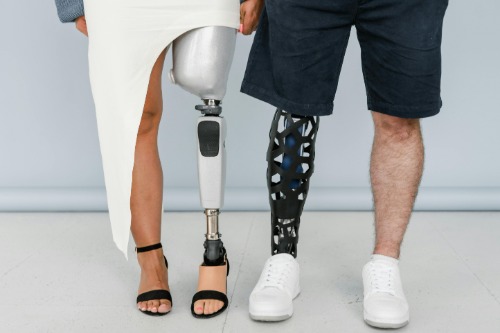
The development of advanced prosthetics, particularly the highly functional artificial limbs, was accelerated by military funding. During wars like World War I and World War II, there was a growing need to provide soldiers who had lost limbs with realistic and functional replacements. The U.S. military invested heavily in researching and developing prosthetic technologies to help wounded soldiers regain mobility. Over the years, this research has expanded into cutting-edge prosthetic limbs with sophisticated mechanics, bionics, and even neural interfaces.
Thanks to these military-driven innovations, prosthetics are now available to civilians who need them, offering better mobility and improved quality of life. People who’ve lost limbs due to accidents, disease, or congenital conditions now have access to more advanced prosthetics that are lightweight, durable, and even responsive to their brain signals. What began as a need to help soldiers return to life after injury has helped countless others around the world. The advancements in prosthetics are a testament to the ways military funding can lead to life-changing technology.
15. The Internet

The internet owes its origins to ARPANET, a military-funded project in the 1960s designed to create a communication network that could withstand a nuclear attack. The U.S. Department of Defense needed a decentralized way to transmit information securely across different locations. Over time, scientists and engineers refined the system, leading to the development of the modern internet. By the 1990s, the internet was opened up to the public, forever changing communication, business, and entertainment.
Now, the internet is an indispensable part of daily life, connecting people across the globe. It allows instant communication, online shopping, and access to unlimited information. From social media to streaming services, nearly everything we do is linked to this military-born invention. What started as a Cold War defense project became the foundation of the digital age.


